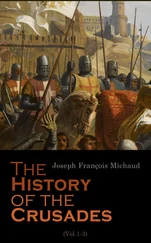"The worship of God in the absurd symbol of the lower animals I do not wish to defend: but it is all that these poor savages can do; and is not that less impious than to speak of the Deity with blasphemous familiarity, as our illiterate preachers often do?" 60
But this people are not in a hopeless condition of degradation.
"The Wesleyan Missionary Society of England have had a mission-station at Badagry for some years, and not without some important and encouraging tokens of success. … The king, it is thought, is more favorable to Christian missions now than he formerly was." 61
And we say Amen!
YORUBA.
This kingdom extends from the seacoast to the river Niger, by which it is separated from the kingdom of Nufi. It contains more territory than either Benin or Dahomey. Its principal seaport is Lagos. For many years it was a great slave-mart, and only gave up the traffic under the deadly presence of English guns. Its facilities for the trade were great. Portuguese and Spanish slave-traders took up their abode here, and, teaching the natives the use of fire-arms, made a stubborn stand for their lucrative enterprise; but in 1852 the slave-trade was stopped, and the slavers driven from the seacoast. The place came under the English flag; and, as a result, social order and business enterprise have been restored and quickened. The slave-trade wrought great havoc among this people. It is now about fifty-five years since a few weak and fainting tribes, decimated by the slave-trade, fled to Ogun, a stream seventy-five miles from the coast, where they took refuge in a cavern. In the course of time they were joined by other tribes that fled before the scourge of slave-hunters. Their common danger gave them a commonality of interests. They were, at first, reduced to very great want. They lived for a long time on berries, herbs, roots, and such articles of food as nature furnished without money and without price; but, leagued together to defend their common rights, they grew bold, and began to spread out around their hiding-place, and engage in agriculture. Homes and villages began to rise, and the desert to blossom as the rose. They finally chose a leader—a wise and judicious man by the name of Shodeke; and one hundred and thirty towns were united under one government. In 1853, less than a generation, a feeble people had grown to be nearly one hundred thousand (100,000); and Abeokuta, named for their cave, contains at present nearly three hundred thousand souls.
In 1839 some colored men from Sierra Leone, desirous of engaging in trade, purchased a small vessel, and called at Lagos and Badagry. They had been slaves in this country, and had been taken to Sierra Leone, where they had received a Christian education. Their visit, therefore, was attended with no ordinary interest. They recognized many of their friends and kindred, and were agreeably surprised at the wonderful change that had taken place in so short a time. They returned to Sierra Leone, only to inspire their neighbors with a zeal for commercial and missionary enterprise. Within three years, five hundred of the best colored people of Sierra Leone set out for Lagos and Badagry on the seacoast, and then moved overland to Abeokuta, where they intended to make their home. In this company of noble men were merchants, mechanics, physicians, school-teachers, and clergymen. Their people had fought for deliverance from physical bondage: these brave missionaries had come to deliver them from intellectual and spiritual bondage. The people of Abeokuta gave the missionaries a hearty welcome. The colony received new blood and energy. School-buildings and churches rose on every hand. Commerce was revived, and even agriculture received more skilful attention. Peace and and plenty began to abound. Every thing wore a sunny smile, and many tribes were bound together by the golden cords of civilization, and sang their Te Deum together. Far-away England caught their songs of peace, and sent them agricultural implements, machinery, and Christian ministers and teachers. So, that, nowhere on the continent of Africa is there to be found so many renewed households, so many reclaimed tribes, such substantial results of a vigorous, Christian civilization.
The forces that quickened the inhabitants of Abeokuta were not all objective, exoteric: there were subjective and inherent forces at work in the hearts of the people. They were capable of civilization—longed for it; and the first blaze of light from without aroused their slumbering forces, and showed them the broad and ascending road that led to the heights of freedom and usefulness. That they sought this road with surprising alacrity, we have the most abundant evidence. Nor did all the leaders come from abroad. Adgai, in the Yoruba language, but Crowther, in English, was a native of this country. In 1822 he was sold into slavery at the port of Badagry. The vessel that was to bear him away to the "land of chains and stocks" was captured by a British man-of-war, and taken to Sierra Leone. Here he came under the influence of Christian teachers. He proved to be one of the best pupils in his school. He received a classical education, fitted for the ministry, and then hastened back to his native country to carry the gospel of peace. It is rather remarkable, but he found his mother and several sisters still "in the gall of bitterness and in the bonds of iniquity." The son and brother became their spiritual teacher, and, ere long, had the great satisfaction of seeing them "clothed, in their right mind, and sitting at the feet of Jesus." His influence has been almost boundless. A man of magnificent physical proportions—tall, a straight body mounted by a ponderous head, shapely, with a kind eye, benevolent face, a rich cadence in his voice—the "black Bishop" Crowther is a princely looking man, who would attract the attention of cultivated people anywhere. He is a man of eminent piety, broad scholarship, and good works. He has translated the Bible into the Yoruba language, founded schools, and directed the energies of his people with a matchless zeal. His beautiful and beneficent life is an argument in favor of the possibilities of Negro manhood so long injured by the dehumanizing influences of slavery. Others have caught the inspiration that has made Bishop Crowther's life "as terrible as an army with banners" to the enemies of Christ and humanity, and are working to dissipate the darkness of that land of night.
59The king of Dahomey is limited to 3,333 wives! It is hardly fair to suppose that his majesty feels cramped under the ungenerous act that limits the number of his wives.
60Savage Africa, p. 51.
61Western Africa, p. 207.
CHAPTER V.
THE ASHANTEE EMPIRE.
Table of Contents
Its Location and Extent.—Its Famous Kings.—The Origin of the Ashantees Obscure.—The War with Denkera.—The Ashantees against the Field conquer Two Kingdoms and annex them.—Death of Osai Tutu.—The Envy of the King of Dahomey.—Invasion of the Ashantee Country by the King of Dahomey.—His Defeat shared by his Allies.—Akwasi pursues the Army of Dahomey into its own Country.—Gets a Mortal Wound and suffers a Humiliating Defeat.—The King of Dahomey sends the Royal Kudjoh His Congratulations.—Kwamina deposed for attempting to introduce Mohammedanism into the Kingdom.—The Ashantees conquer the Mohammedans.—Numerous Wars.—Invasion of the Fanti Country.—Death of Sir Charles McCarthy.—Treaty.—Peace.
The kingdom of Ashantee lies between the Kong Mountains and the vast country of the Fantis. The country occupied by the Ashantees was, at the first, very small; but by a series of brilliant conquests they finally secured a territory of three hundred square miles. One of their most renowned kings, Osai Tutu, during the last century, added to Ashantee by conquest the kingdoms of Sarem, Buntuku, Warsaw, Denkera, and Axim. Very little is known as to the origin of the Ashantees. They were discovered in the early part of the eighteenth century in the great valley between the Kong Mountains and the river Niger, from whence they were driven by the Moors and Mohammedan Negroes. They exchanged the bow for fire-arms, and soon became a warlike people. Osai Tutu led in a desperate engagement against the king of Denkera, in which the latter was slain, his army was put to rout, and large quantities of booty fell into the hands of the victorious Ashantees. The king of Axim unwittingly united his forces to those of the discomforted Denkera, and, drawing the Ashantees into battle again, sustained heavy losses, and was put to flight. He was compelled to accept the most exacting conditions of peace, to pay the king of the Ashantees four thousand ounces of gold to defray the expenses of the war, and have his territory made tributary to the conqueror. In a subsequent battle Osai Tutu was surprised and killed. His courtiers and wives were made prisoners, with much goods. This enraged the Ashantees, and they reeked vengeance on the heads of the inhabitants of Kromanti, who laid the disastrous ambuscade. They failed, however, to recover the body of their slain king; but many of his attendants were retaken, and numerous enemies, whom they sacrificed to the manes of their dead king at Kumasi.
Читать дальше












